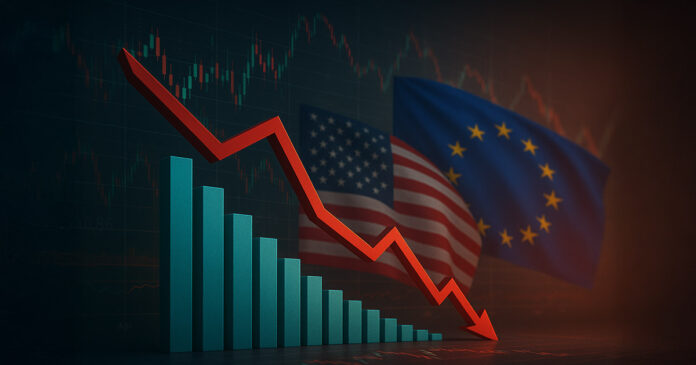Tariff Tensions: Will the US and EU Reach a Deal Before It’s Too Late?
The clock is ticking for the US and EU to reach a tariff deal, with the deadline of August 1 looming large. Investors are holding their breath, hoping that a collective agreement will be reached in time to calm the global markets. The stakes are high, and the uncertainty is palpable, with President Trump’s earlier threats to increase tariffs on certain imports to up to 50% still fresh in everyone’s minds.
The State of Play
According to reports, the US and EU have been negotiating a deal that would impose a basic tariff of 15% on European goods entering the US, with potential exceptions for selected sectors. However, some of the most contentious areas, such as automobiles, steel, and aluminum, as well as sensitive sectors like pharmaceuticals and semiconductors, remain unresolved. EU officials are pushing for an agreement that provides immediate relief from tariffs, rather than delaying them until the final deal is ratified.
President Trump’s recent comments on the matter have done little to ease the uncertainty, with him stating that there’s only a 50-50 chance of reaching a deal with the EU. This has left European diplomats and investors on edge, wondering what the future holds. As Trump told reporters on July 25th, “I would say that we have a 50-50 chance, maybe less than that, but a 50:50 chance to make a deal with the EU.” It’s clear that the US-EU tariff saga is far from over.
Market Reactions: Volatility, Risk, and Crypto
Investors have been reacting to the prospect of a deal with cautious optimism, hoping that even a partial agreement can reduce the trade uncertainty that has been weighing on European stock markets and global supply chains since Trump’s first tariff announcements in April. US stocks are near record highs, but volatility is expected to increase as the deadline approaches.
The ongoing trade tensions and tariff threats have been driving concerns about economic slowdowns, stagflation, and disruptions to both the dollar and the euro, leading to increased volatility across markets. In times of uncertainty, crypto assets like Bitcoin often benefit as investors seek alternative stores of value that are independent of government politics. In fact, previous escalations in US trade tensions have led to surges in BTC trade volumes, reinforcing the narrative of Bitcoin as a mature asset and a “hedge” against geopolitical and monetary uncertainties.
However, as one expert notes, “If trust in national currencies or markets drops, people can turn to crypto to preserve their wealth. But this behavior is not consistent and depends heavily on sentiment.” If the tariff dispute continues or uncertainty persists, we can expect a new dynamic for Bitcoin and crypto as safe-haven assets and stores of value, similar to gold. On the other hand, a trade agreement could calm traditional markets and potentially dampen the crisis premium that has been driving up crypto prices, leading to a short-term slump.

